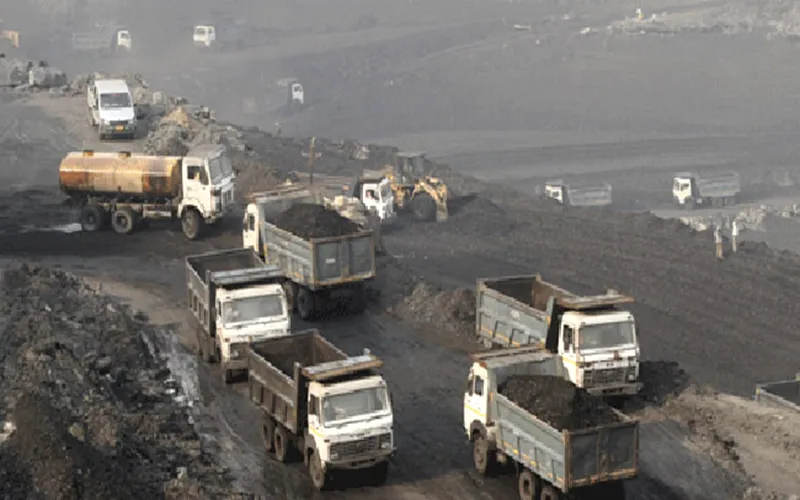Indian policy makers are fond of defining the country's energy security in terms of the three A's of Availability, Access, and Affordability. Of these the last two are anyway contingent upon the first - if primary fuels are not available, then access or affordability are no better than Mungerilal ke Sapne.
Caught in these dreams, the B stands for a Bubble - cabined, cribbed and confined by four Cs that hem in our poor policy makers like four formidable walls. What are the four Cs threatening not just our energy security but also the future growth of the country?
The First C (no prizes for guessing) denominates Coal - the one resource we have so much and yet so little of - our big insurmountable Coal Wall. Coal is the single biggest fuel source in India accounting for half its total energy use. It produces two thirds the country's electricity. Yet one of the lowest figures for per capita availability of electricity (900 KWH) leaves one third of the population with no access and the remaining with extremely questionable access to power.
Trailing far behind in the growth of infrastructure and manufacturing, can India ever hope to become a global economy without a four-fold increase in the availability of electricity? Can that happen without coal? Even in the most optimistic scenario, should coal production reach the level of 795 MT by the end of the XII Plan, we are left with a gap of 185 MT in the terminal year of the XII Plan, a gap which can only be met by importing more.
Imports bring us smack against the Second C - the Current Account Deficit that constitutes the Fiscal Wall our FM unfailingly confronts each budget. The Fiscal Wall that makes it impossible to plan beyond the immediate here and now, severely restricting the room to manoeuvre that our elephantine democracy needs.
India imports 76% of its oil, 34% of its gas and 20% of its coal. Its energy imports last year exceeded $130 billion or 26% of its import bill of $ 490 billion. By the end of the 12th Plan India's energy imports could be $150-$160 billion. One can understand the need for oil imports, for gas imports or uranium imports. But, with the fourth largest coal reserves in the world, why should India need to import coal - especially thermal coal?
Because every time we scour the international market for fuel imports, our companies invariably run against the third C - the Great Wall of China. It is a wall we confront and compete with in every sphere whether it be export markets or natural resources such as oil, gas, coal, cadmium, uranium.
China's phenomenal growth has been fuelled almost entirely by coal. This is a country with double our coal reserves but six times our production. With these levels of production, China now plays international markets, switching between domestic and imported coal depending on where the price advantage lies.
India struggling with sheer availability, remains a price taker, at the mercy of international markets.
So last month, sights fixed on COP 15 and plunging coal prices, after having built the world's largest coal fired capacities, what does China do? The NDRC declares it intends to ban from 2015 the burning of coal with an ash content greater than 16 per cent or sulphur content of more than 1 per cent in booming eastern cities that are now the focus of its fight against air pollution. India burns coal having an ash content of 45%. This is where we find ourselves running up against the Fourth C, the Climate Wall - increasingly strident voices demanding that countries like China and India clean up their act and take action to drastically reduce emissions.
Post 1992, following the Rio Earth Summit, in what was an unprecedented grab of global carbon space, China effectively used the following two decades - the post Rio slack - to build up the largest ever coal fired capacity in the world. If there was one late last night coal train leaving the station in 1992 - China clambered onto it. We missed it.
Now as the times comes to negotiate a deal for the post Kyoto framework China sits pretty, secure in the knowledge that the carbon intensity of its hitherto runaway growth can only come down.
With the NDRC cracking down on the kind of coal that China is willing to burn, one can rest assured that with time China will be less of a willing accomplice of ours in future Climate talks. So India's strategy of hanging on to China's coat tails in climate negotiations may not yield dividends for very long.
Meanwhile, the shale gas boom in the United States is seeing a more aggressive votary for climate action emerge across the Atlantic. We are therefore headed for a situation where, if not in Paris, then sooner rather than later, India is going to find itself increasingly isolated on the climate front. We should not be surprised to hear far stronger voices arguing that available resources of coal should by international fiat be declared un-burnable. So this is where we stand. The three precious A's of Energy Security trapped and confined within the confines of our CAD, the global competition for resources with a China that has arrived, the looming constraints on coal because of climate change - all mocking our inability to have propelled our economy on the only fuel resource we actually had plenty of.
When you have four insurmountable walls you do not go about breaking them armed with a bubble. Yet all we have is a bubble. The bubble is the hyper-inflated notion, ballooned out of all proportion- that has been constructed around the 'ownership" of resources. We hear it debated endlessly. Reams and reams have been written in judgments by the Supreme Court, in painstakingly voluminous reports by the CAG, and in much ink spilt in editorial columns - all saluting the ownership of precious natural resources vesting with the people of the country. Legalistically speaking, the people are indeed, as a collective, (unlike the US where they do the same as individuals) indisputable owners of the country's oil, its gas, its coal, its minerals, its sand, and its spectrum.
The problem is that in all the legal obfuscation around ownership we have even managed to confuse the distinction between a reserve and a resource. Mineral reserves are by themselves valueless. Coal reserves buried deep underground, whether un-discovered - or un-extracted - have zero value.- incapable of conferring even an iota of benefit upon their owner - the people of this country.
Ownership only confers benefit through a process of discovery, establishment, and production. The mineral must first be discovered and appraised in order to be established as a reserve; it must then be efficiently extracted so that it is commercially viable; and finally it must be used in the most productive way to derive maximum value through its best possible use in the economy. Only upon the efficient, completion of all these processes does it qualify to be classified as a resource that has economic value.
All these steps need investments, they need technology, and they need human ingenuity and entrepreneurship. Only those entities that can best combine these will confer maximum value upon resources in ways that bring maximum benefit to the economy and therefore to the people of the country. The corollary to that being that any natural resource if extracted or used inefficiently only has negative value and will do more harm than good for its owner.
So the very shrill and contentious sabre-rattling on natural resources indulged in by their Hon'ble Lordships and the CAG reminds one of Don Quixote riding his ass in full battle armour - only to tilt at windmills. The errors of yesterday if uncorrected are bound to become tomorrow's blunders. And the Supreme Court has been absolutely right in highlighting these. The primary error lay in the half-hearted amendments made to the Coal Nationalization Act - the last coming as recently as 2012. Let us correct them and get on with serious policy action before we lose both time and hope. The fixes for the errors ultimately must lie with the executive and the legislature, not with the judiciary.
To begin with, let us for God's sake get rid of our distrust of markets. We must shun any short term fixes that are surreptitiously in bed with allocations and quotas. Resources are best allocated by efficiently functioning, well regulated markets rather than by Government committees rationing fuel linkages of never to be produced coal reserves.
In all the hype and hyperbole about what to do with coal blocks, the plain fact is that the real danger lies in our coal reserves turning valueless for the country, of no benefit to the owner - the people of the land. They will be value less if we don't extract them, they will be valueless when rendered un-burnable by climate action a few decades from now.
Having missed one train already, are we now going to squabble at the bus stop and miss the last bus as well? If we do, the promised Achhe Din may meet the same fate as met by one other well-known King of Good Times.
Courtesy: India Today, October 24, 2014
The views expressed above belong to the author(s). ORF research and analyses now available on Telegram! Click here to access our curated content — blogs, longforms and interviews.

